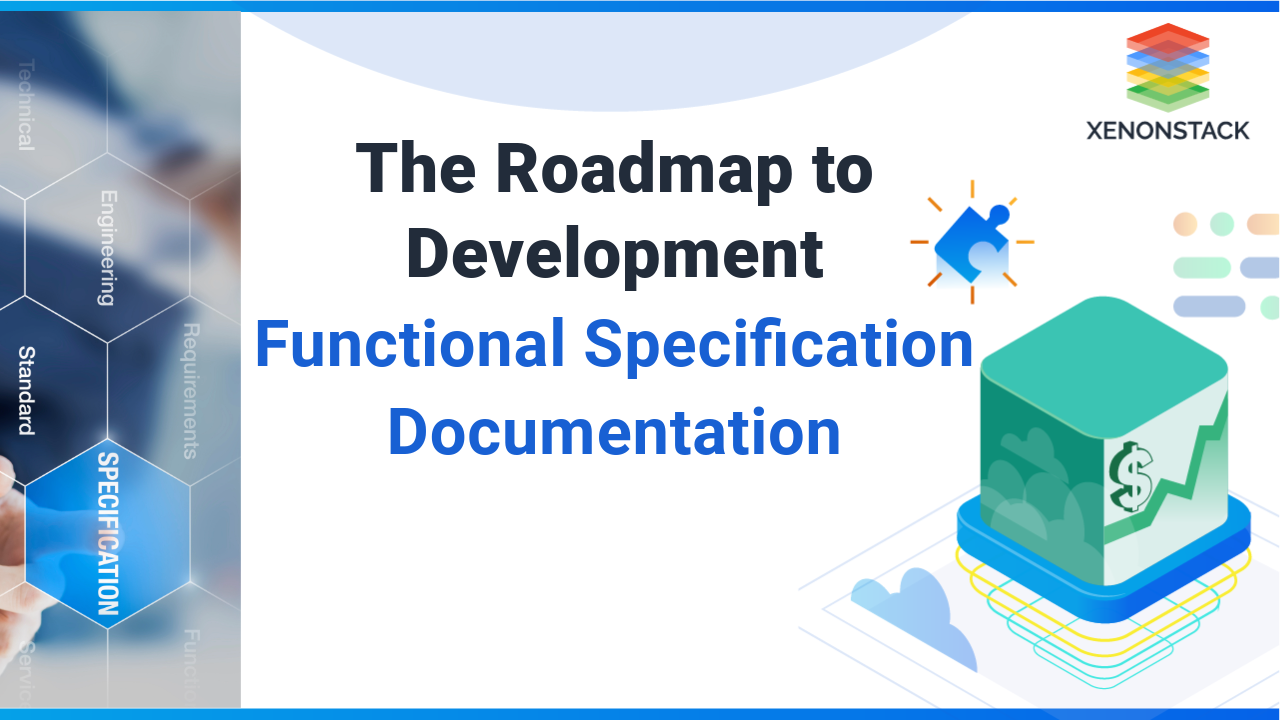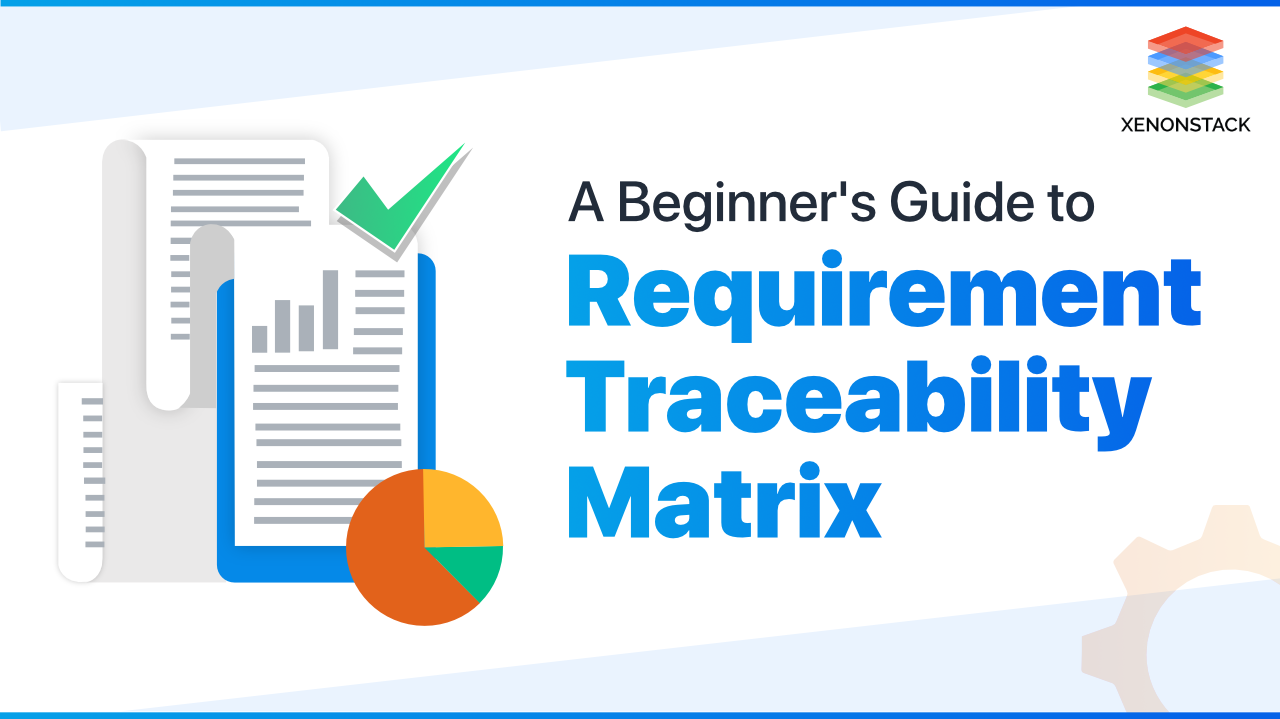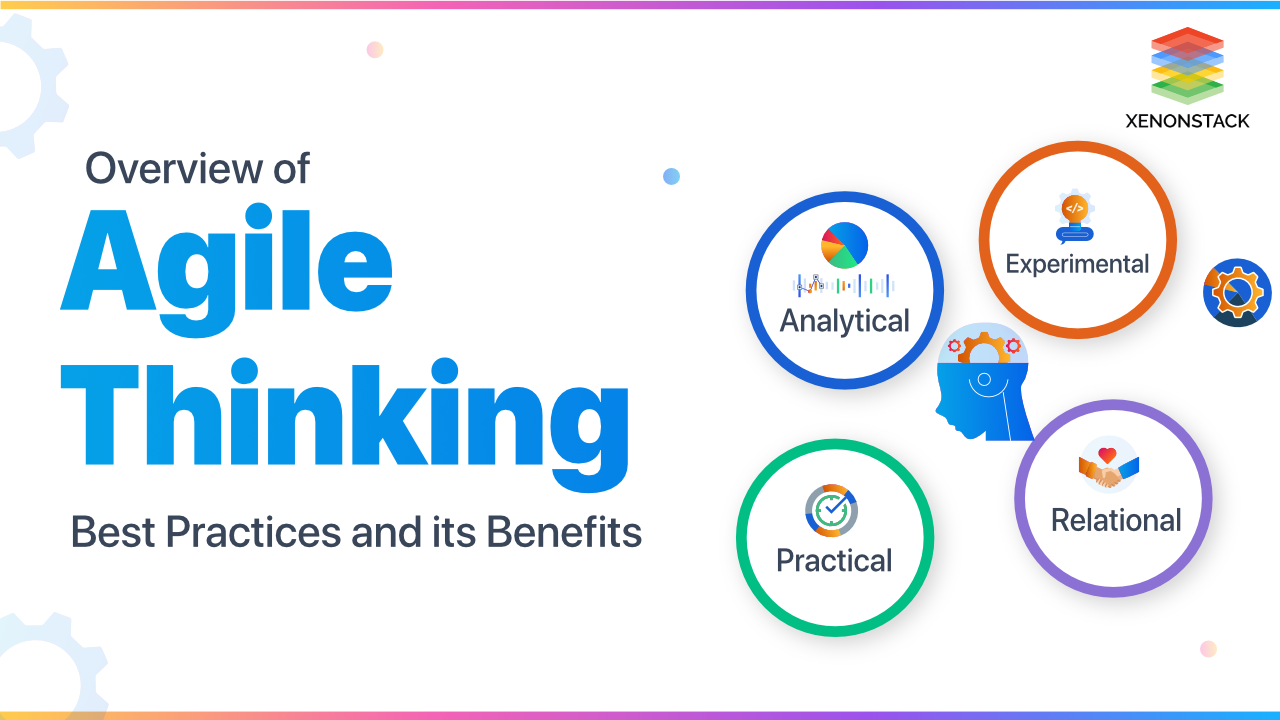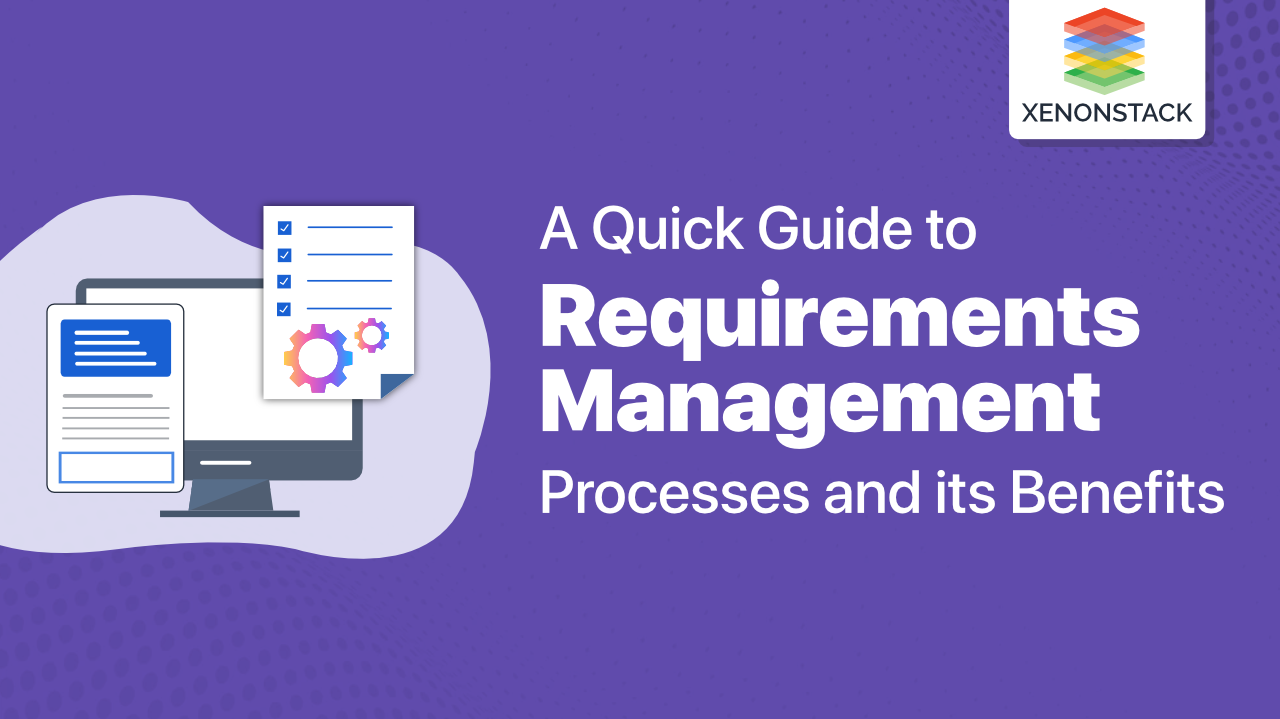
What is Requirement Management?
Requirements management is the process of gathering, analysing, and tracking requirements to ensure that customers and other stakeholders' needs are met. The requirements, typically called needs, are essential and represent the capabilities that will satisfy your product strategy. A requirements management system ensures that all requirements are collected, analyzed, and refined throughout the product lifecycle as new information is gathered.
The Role of Requirement Management Across Industries
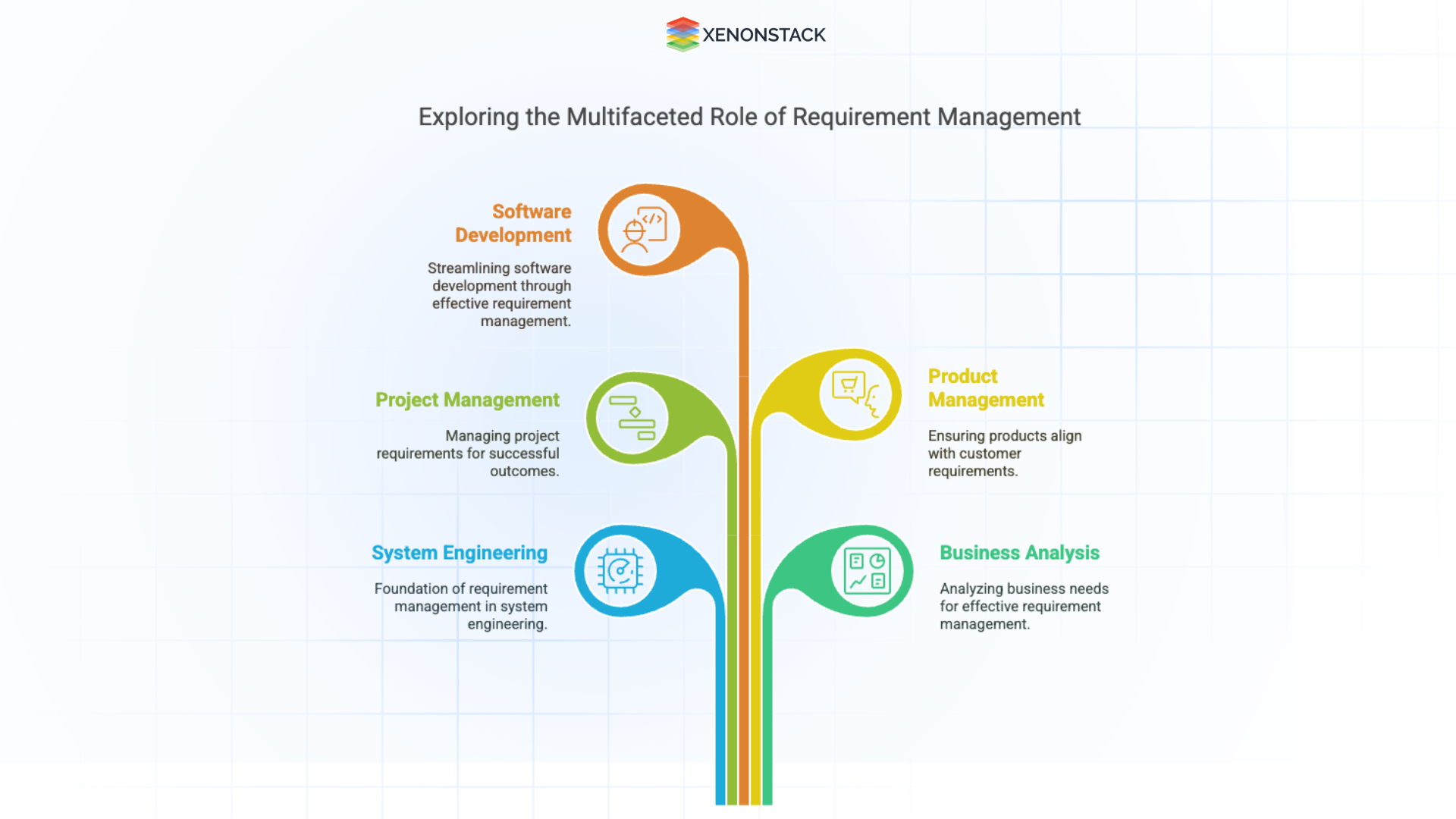 Fig 1: Role of Requirement Management
Fig 1: Role of Requirement ManagementRequirement management has its roots in system engineering but can also be applied across disciplines such as business analysis and project management. It is essential for product managers and software development teams as it helps ensure that products meet customer needs. Requirements management software helps streamline this process by organizing and tracking changes efficiently. Typically, a product manager is responsible for managing the process.
You are responsible for helping the team define requirements and managing changes throughout development. When you learn how to manage your requirements effectively, you can better validate customer needs and build features that customers love.
Application lifecycle management is the set of strategies, processes, and tools that help you manage your software development, testing, and deployment lifecycles. Click to explore about our, Application Lifecycle Management
Key Elements of a Good Requirement
A requirement is something necessary for a successful outcome. Requirements for software products can be pretty extensive. Some features might have multiple requirements, so it's essential to understand what they are. In this case, you can think of requirements as components that must be implemented to complete the feature.
Whatever you create, the requirements should be:
-
Required: Required to achieve business and product goals.
-
Specific: Detailed with reliable roots tracing back to their origins and purpose.
-
Understandable: Written and without ambiguity. Concise: Sufficiently detailed information about the end user's challenges or needs.
-
Feasible: Researched and proven to be both valuable and achievable.
-
Testable: Can be completed or approved through user acceptance testing or other criteria.
How Requirement Management Works
Requirement management ensures that product development objectives are met. It involves strategies for documenting, evaluating, organizing, and deciding on requirements so that the development team always works with the most accurate and up-to-date information.
From project initiation to the end of the engineering lifecycle, a requirements management system helps prevent errors by tracking changes, maintaining clarity, and fostering communication with stakeholders. Utilizing requirements management software and tools ensures better organization, minimizes risks and enhances collaboration throughout development.
Why is Requirement Management Important?
Project failures are frequently attributed to problems with requirements management. Poorly defined requirements can result in scope creep, cost overruns, project delays, and poor product quality that does not satisfy customer expectations and safety requirements.
A requirements management plan is crucial to a project's success because it allows the development team to lead the product development lifecycle and control the scope. Requirements management software gives you the tools to carry out your strategy, lowering costs, speeding up time to market, and improving quality control.
Who is Responsible for Requirement Management?
The responsibility for requirement management varies depending on the nature of the request and the organization’s structure. However, a product manager is typically responsible for ensuring that the requirements management process is followed for product features.
A key part of this role involves gathering ideas and feedback from clients, internal teams, and other stakeholders. The product manager must assess whether new ideas align with the product strategy and business goals and translate them into actionable requirements and features.
Effective requirements management relies on clear communication between stakeholders to ensure that no single group’s needs dominate the process. As the product manager, you must ensure that all business, customer, product, and team requirements are balanced and met efficiently.
Understanding the Requirement Management Process
Creating a process for managing requirements helps to create consistency and transparency between product, engineering, and other stakeholders. Changes to the requirements should be discussed and agreed upon broadly throughout the product's life cycle.
It does not end with a product's release. From that point onwards, incoming data about application acceptance is collected and entered into the next generation or release product planning stages. Thus, the cycle of existence begins again.
The requirements management process typically includes the following phases:
-
The collection process involves gathering feedback and needs from customers and internal teams.
-
They determine whether the proposed features and requirements align with the company's or product's vision.
-
Documenting user requirements and detailing technical requirements are two essential aspects of prioritization.
-
We are planning upcoming releases or sprints and ensuring that the features and requirements included are the most important essential parts of the job.
-
It was then validated, a definition of "complete" was created, and ongoing enhancements were planned.
The systems engineering V model is supplemented by a typical requirements management approach that includes the following steps:
-
Get a list of the stakeholders' initial requirements.
-
Review the needs
-
Define and document the requirements.
-
Establish a priority list of requirements.
-
Requirements must be agreed upon and approved.
-
Follow the requirements for the work items.
-
After the implementation, check with stakeholders to see if any changes to the requirements are required.
-
Verify and validate system requirements using requirements management tools and test management.
-
Examine the effects of the modifications.
-
Re-evaluate the requirements
-
Changes should be documented.
By following these steps, technical teams can exploit the complexity involved in producing smart, connected goods. Using requirements management software can help streamline the process and improve quality while increasing the sales cycle.
The way in which a company develops its products can determine how and when requirements move through the requirements management process. That is, one phase ends before the start of the next. In an Agile environment, many requirements can be fulfilled at different stages because the next task is prioritized as part of the next task.
A requirements management process is effective if it is well-communicated and documented. Building things that help other people is valuable for your customers and your business.
A functional specification document is a document that describes what the end-users want the system to do and not how the system works. Click to explore about our, Functional Specification Document.
What is a Requirement Management Plan (RMP)?
A requirements management plan (RMP) outlines how a project's requirements will be received, assessed, documented, and managed. The plan typically includes everything from high-level project information collection to detailed requirements management processes that evolve throughout the project lifecycle. Key elements of an RMP include the project overview, requirements collection methods, roles and responsibilities, requirements management tools, and traceability strategies.
Qualities of Requirements
A requirement should have specific properties to be regarded as a "good" requirement, such as being:
-
Particular – Clearly defined and specific.
-
Concise and Clear – Easy to understand without ambiguity.
-
Accurate and Understandable – Correct and interpretable by all stakeholders.
-
Practical and Feasible – Achievable within technical and business constraints.
-
Necessary – Essential for achieving business and product goals.
Requirements sets should be assessed as well, and they should be consistent and non-redundant.
Top Benefits of Effective Requirements Management
Implementing a strong requirements management process offers several advantages, including:
-
Lower development costs throughout the entire lifecycle by reducing inefficiencies and unnecessary revisions.
-
Fewer defects and reduced rework, leading to a smoother development cycle and better product quality.
-
Minimal risk for safety-critical products, ensuring compliance with industry regulations and standards.
-
Faster delivery with precise requirements prioritization, allowing teams to focus on essential features.
-
Reusability of well-defined requirements for future projects, improving long-term efficiency.
-
Traceability to ensure alignment with business objectives, making it easier to track requirement changes.
-
Requirements tied to test cases, improving validation and verification, ensuring all features meet the necessary criteria.
-
Global configuration management for better organization and collaboration across teams, keeping all requirement changes well-documented.
How to Standardize Requirement Management for Project Success
Requirements management can help improve a project's results and is a key part of a successful undertaking. However, creating a standard process in your organization is vital to achieving consistent and high-quality results. A requirements management standard process is essential for every organization, ensuring all requirements are documented, managed, and tracked. This helps ensure the requirements are delivered on time and to the required quality level.
Maintaining a requirements management practice requires effort and focus. This investment will likely increase requirements, quality, and final products, which solve business problems.
Next Steps in Adopting Implementing a Strong Requirement Management System
Talk to our experts about implementing requirement management systems. Learn how industries and different departments use structured workflows and data-driven decision-making to enhance product development. Utilize requirement management to streamline and optimize project planning and execution, improving efficiency and alignment with customer needs.


